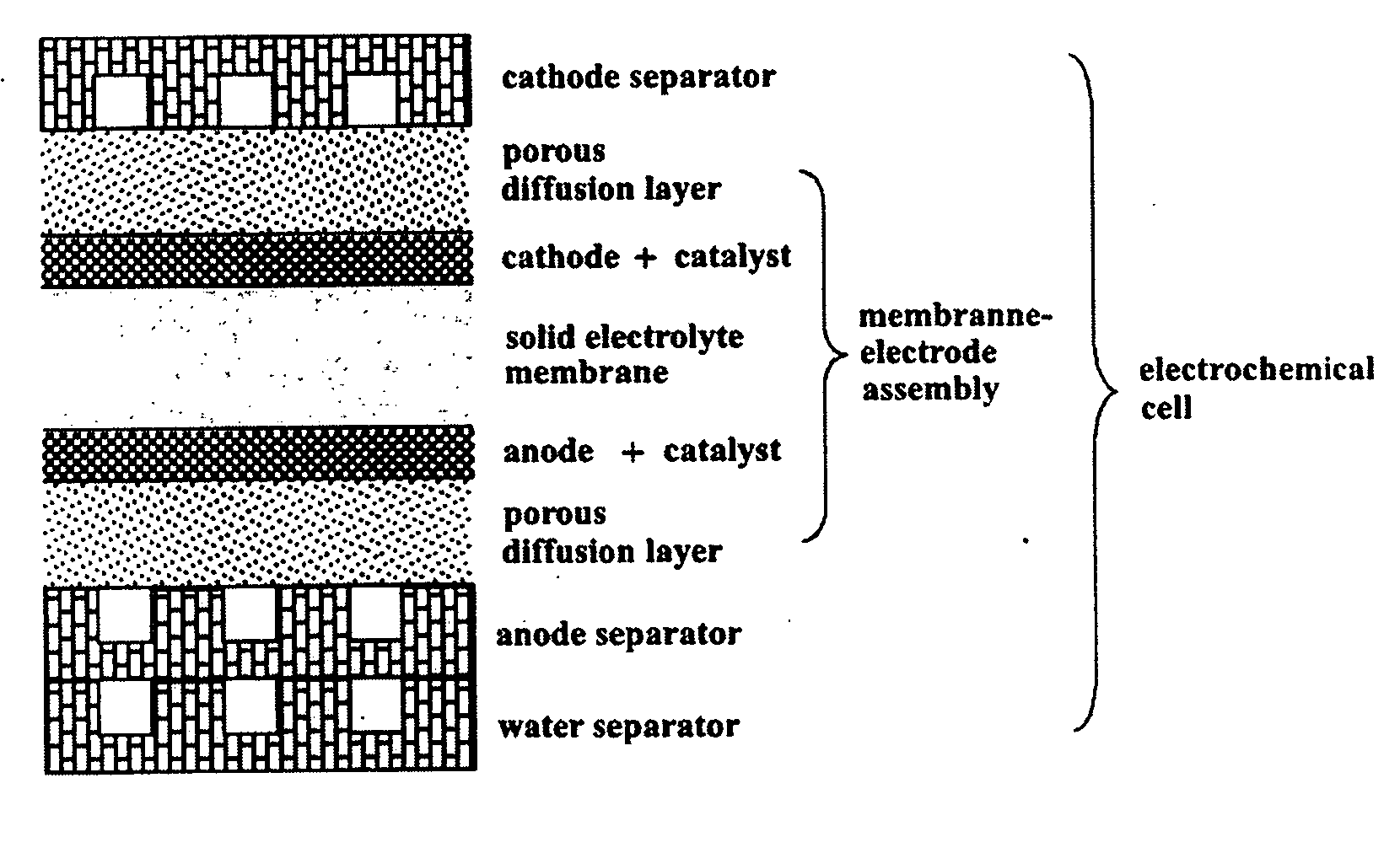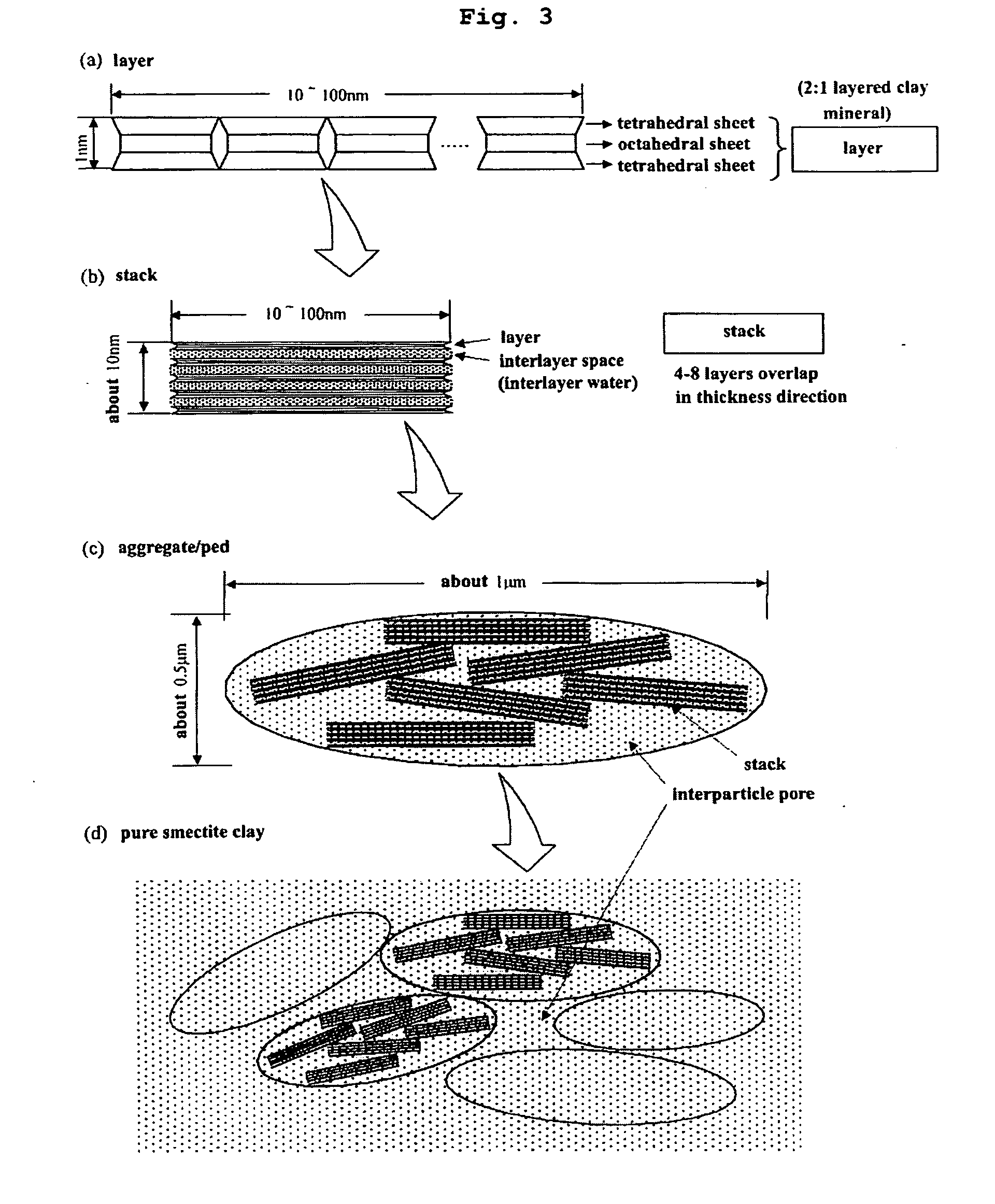Proton exchange membrane fuel cell using solid electrolyte membrane of sheet silicate minerals and an intercalation compound
a technology of solid electrolyte and fuel cell, which is applied in the direction of non-metal conductors, cell components, conductors, etc., can solve the problems of low cell voltage, low output density, and rapid reduction of catalytic activity, so as to prevent fuel crossover, increase the working temperature of layered silicate pefc, and high proton conductivity
- Summary
- Abstract
- Description
- Claims
- Application Information
AI Technical Summary
Benefits of technology
Problems solved by technology
Method used
Image
Examples
Embodiment Construction
[0043] If the electrolyte can be produced, it is possible to set up an electrochemical cell as shown in FIG. 1 on the basis of the existing technology and to build a fuel cell system by stacking the cells.
[0044] If the density and impregnated liquid contents are properly controlled when producing the layered silicate membrane or the intercalation compound membrane, the fuel crossover can be prevented. Because of a molecular sieve effect of the layered silicate membrane, two inconsistent properties of high proton conductivity and low fuel crossover can be satisfies simultaneously.
[0045] Based on the experimental results shown in FIG. 7, ethanol is a preferable fuel of the direct organic fuel cell using the layered silicate membrane. Furthermore, if the density and impregnated liquid contents are strictly controlled when producing the layered silicate membrane, it is possible to produce a solid electrolyte of the layered silicate membrane which shows a molecular sieve effect for org...
PUM
| Property | Measurement | Unit |
|---|---|---|
| Density | aaaaa | aaaaa |
| Catalytic activity | aaaaa | aaaaa |
| Energy | aaaaa | aaaaa |
Abstract
Description
Claims
Application Information
 Login to View More
Login to View More - R&D
- Intellectual Property
- Life Sciences
- Materials
- Tech Scout
- Unparalleled Data Quality
- Higher Quality Content
- 60% Fewer Hallucinations
Browse by: Latest US Patents, China's latest patents, Technical Efficacy Thesaurus, Application Domain, Technology Topic, Popular Technical Reports.
© 2025 PatSnap. All rights reserved.Legal|Privacy policy|Modern Slavery Act Transparency Statement|Sitemap|About US| Contact US: help@patsnap.com



